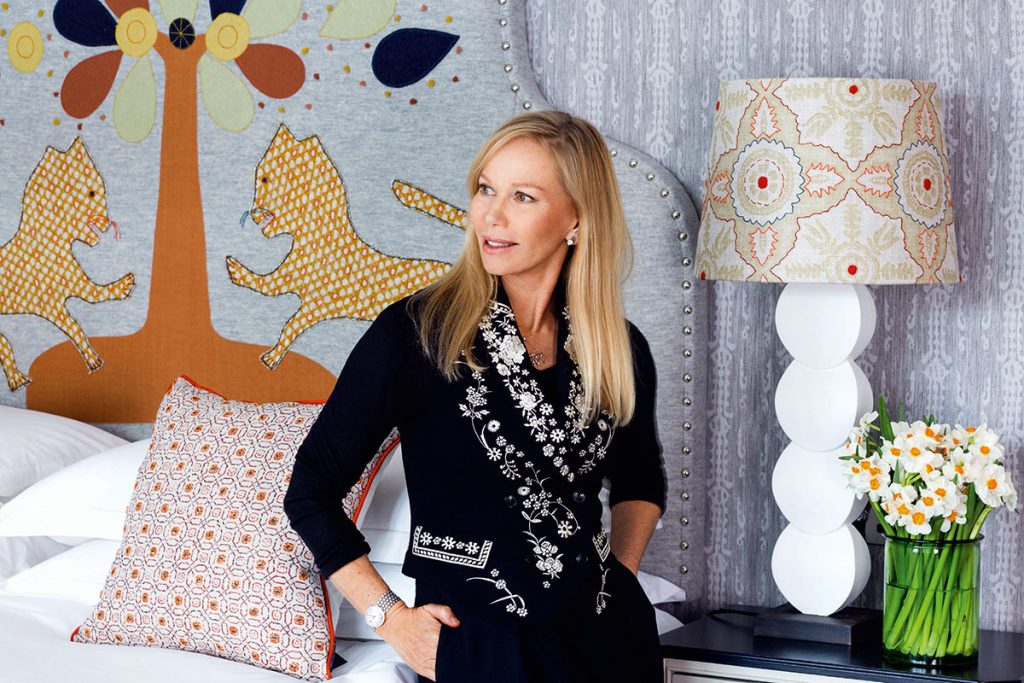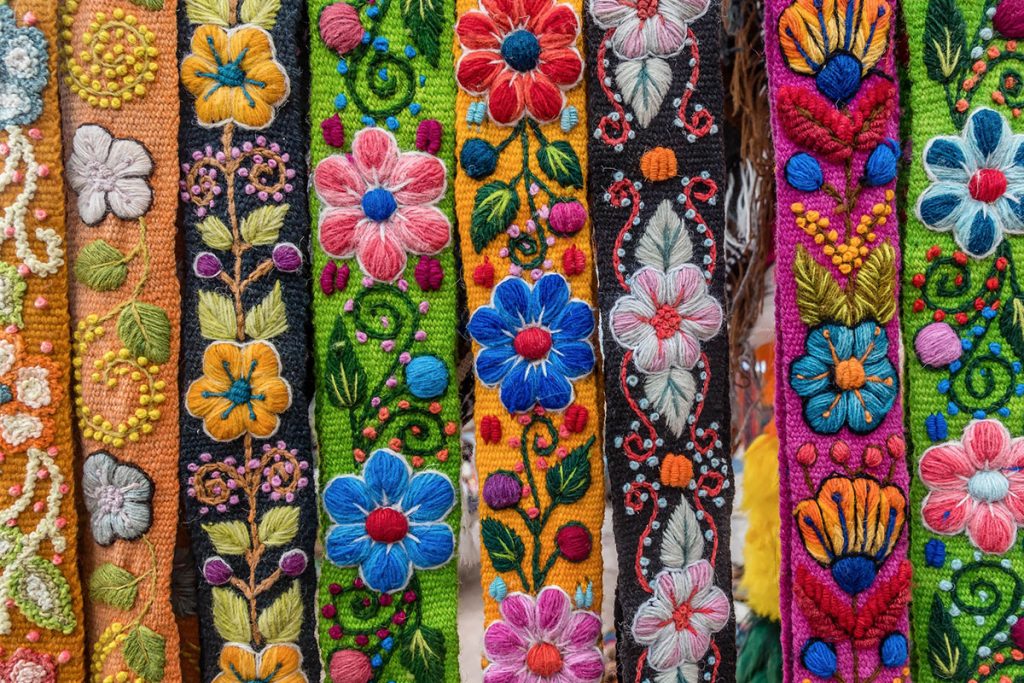The creative force behind a portfolio of chic and glamorous hotels in London and New York, Kit Kemp is renowned not only for her unique interiors but also as an author, a respected champion of British art, craft and sculpture, and as a designer of textiles, fragrance and homewares

Image by Simon Brown from Kit Kemp’s new book Design Thread, £30, Hardie Grant
How has your style evolved?
I want every piece of work I do to be considered individually. But, certainly, I have a recognisable hand. My work should appeal to all the senses and appear carefree and artless. But don’t be fooled – the devil is in the detail, and each piece of work is rigorously thought through.
What are your biggest influences?
Textiles: whether organic pieces, remnants, colourful threads, ethnic, ancient or contemporary, colourful or monotone, linen, wool, dyed or natural, I love them all. I also love folk art and handcrafted designs.
Who is your design hero?
Vanessa Bell of the Bloomsbury Group. She was Virginia Woolf’s sister and an artist in her own right. She belonged to the Omega Group of artists and craftsmen who created wallpapers, fabrics, carpets, ceramics and murals that took the home far away from heavy Victorian and Edwardian influences to a much lighter and more colourful feel.
Vanessa had a very distinctive colour palette that works so well in British interiors with our depth of light throughout the seasons. She was a serious artist with a sensitivity and humanity in her work that I really admire. Her home at Charleston in East Sussex is such a comfortable and welcoming environment. Her talent has lasted over the years and is still a joy to the eye.

Kit Kemp’s design for the bar at the Whitby Hotel in New York, from her newly published book, Design Thread
What is your favourite building?
The Natural History Museum, Alfred Waterhouse’s terracotta-clad masterpiece of 1881, which is opposite our design studio in South Kensington.
It is renowned for inspiring architecture that celebrates the natural world. The creatures carved into the walls seem both mythical and real. My children used to play in its gardens and I hope they will be influenced by it always.
Describe your dream home
I wouldn’t need a whole house, just a room where I could escape to and feel relaxed enough to let the creative juices flow. I have tried to achieve it in my thatched shepherd’s hut at the bottom of the garden.
Despite not one bit of wall or ceiling being left unpatterned or unembellished, it gives me a feeling of great calm and happiness.
What is your own home like?
Home is where you should be able to surround yourself with the things you love, where you can mix it all up, old and new, like a sort of design porridge. My house has a homemade look, which I like. I don’t think a home should be too tailored. It’s like baking a cake: I don’t want it to look like I bought it in a shop. It should have character and style.
What makes a home?
A home should tell a story about who lives there. I love to have a dog wagging its tail in welcome every time I open the front door. A room needs life – it goes to sleep when nobody loves it. I think that’s the difference between a house and a garden: the garden can continue to grow, but a lifeless room just collects dust. It needs people to come alive.
How do you relax?
I walk the dogs in the forest and I ride my horse at the weekend. I’ve had him since he was five, and he’s 26 now, so we are a very stately sight. I love Sunday lunch at home, too.
Luxury is…
Being able to afford a hardback book. It’s having the time to browse, and no concept of the hours going by.
Which interiors product do you wish you’d designed?
There is something magical and mysterious about the way colour is produced. I wish I had been around to introduce colour to fabrics and ceramics for the first time.

Details on a colourful Peruvian blanket
What are you sitting on right now?
One of my spoonback chairs covered in a Peruvian blanket of many colours. It has a leather handle at the top and is not so high-backed as to interrupt a view across the room.
What is Scotland’s greatest attribute?
All those handsome Scotsmen in their tartans and kilts. There is nothing smarter than a Scotsman in full regalia.




